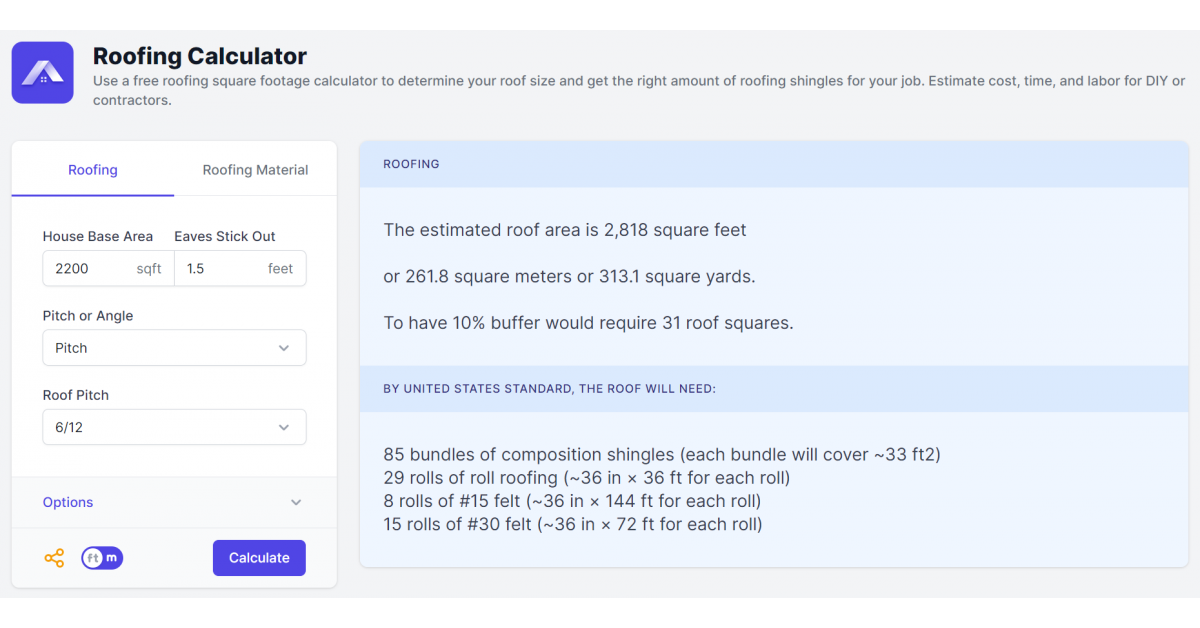Joplin Roofing Calculator: The Solution to Accurate Estimates

In terms of home improvement projects, some of the major investments you can make is in your roof. Whether you are considering a repair or a complete replacement, having an accurate estimate is crucial for effective budgeting and planning. Enter the Joplin Roofing Calculator, your key to navigating the complexities of roofing costs with ease. This handy tool streamlines the process, helping homeowners make informed decisions by providing clear estimates for materials and labor.
With the right guidance, mastering the use of a roofing calculator can save you both time and money. In 417 Roof Calculator , we will explore how to use a roofing calculator for accurate estimates, reveal common mistakes to avoid, and share tips for first-time users. You'll gain insights on how different roof types and seasonal trends can impact your estimates, ensuring that you are well-prepared for your roofing project. Let’s dive into the world of roofing calculators and empower yourself with the knowledge to achieve a successful home renovation.
Utilizing the Roofing Estimator Efficiently
As you utilize a roofing calculator, the initial step is to collect all required information about your roofing project. This entails the size of your roof, the type of roofing material you aim to use, and any specific needs that may impact the cost. Ensuring accurate measurements is crucial, as even minor discrepancies can lead to major errors in your estimates. Make sure that you measure not only the length and width but also factor in slopes, ridges, and valleys.
Once entering your data, closely review the results provided by the calculator. Understanding these figures is key to preparing your budget precisely. The roofing calculator will typically break down your total costs into materials and labor, letting you to see where your money will go. If your estimate looks off, double-check your inputs and reconsider for local market conditions that can alter pricing, such as seasonal trends or regional material availability.
Lastly, take the time to contrast the estimates generated by the roofing calculator with quotes from local roofing contractors. This will help you gauge the accuracy of the calculator and identify any unseen costs that might not have been factored in. Furthermore, making a habit of using the calculator for every roofing project ensures that you stay informed and prepared, letting you to make assured decisions as a homeowner.
Grasping Your Project Estimates

Whenever you utilize a roofing calculator, it's crucial to comprehend the insights from the cost estimates show concerning the roofing project. The calculator commonly provides a summary of material costs, labor expenses, and additional fees that may apply. This information assists homeowners understand how their budget is assigned and points out the key components that play a role to the overall expense of the new roof installation.
One essential aspect to take into account is how different roof types can influence your estimates. For instance, a flat roof may require different materials and installation techniques compared to a gabled roof. Additionally, the geographical location can impact costs due to differences in labor rates and material availability. Understanding these considerations ensures you have realistic expectations about your roofing project and can take informed decisions.
Finally, it’s essential to evaluate the estimates you obtain from the roofing calculator to quotes from professional contractors. While the calculator is a valuable tool for first estimates, professional input can offer insights into local costs and any unique factors for your specific project. Being aware of these distinctions allows you to prevent overestimating or underestimating the financial commitment needed, ultimately leading to a more efficient budgeting approach.
Tips for Precise Cost Estimation
To effectively use a shingle calculator, it is vital to have correct measurements of your rooftop. Commence by measuring the length and width of all areas of your roof to get a precise square footage. Remember to factor for slopes, hips, and valleys, as these can impact the complete square footage and materials necessary. Taking the time to measure properly will lead to better estimates and prevent unexpected costs later in the project.
When calculating costs, ensure you input realistic figures for materials and labor. Investigate local pricing and consider seasonal changes, as roofing costs can change based on market demand and weather conditions. Additionally, it is beneficial to get estimates from local suppliers to contrast with the calculator's output. Being informed about your local market will permit you to adjust your calculator estimates as necessary and create a solid budget.
Lastly, consistently review and cross-verify your calculator results against quotes from contractor roofing contractors. This comparison will help identify any discrepancies and make certain you are avoiding hidden expenses. By validating your calculator results, you can securely plan your roofing project while preventing overspending and confirming that your budget matches with your expectations.
